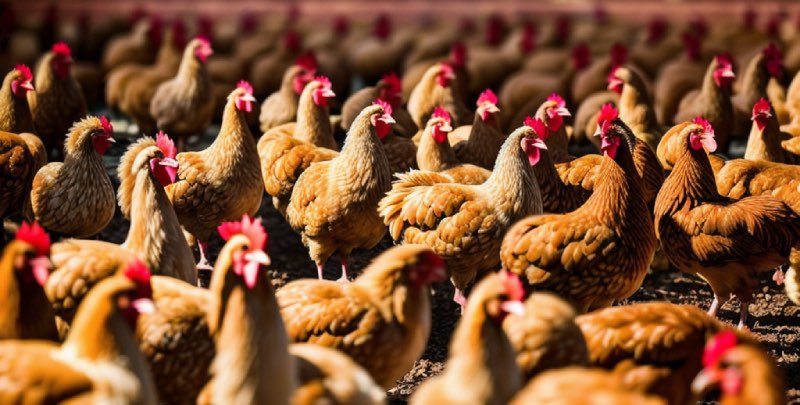Deadly bird flu
God showed Noah by the rainbow sign,
no more water, but fire next time.
— “Fire Next Time” Lyrics by Rev. Milton Brunson
In 2005, a bird flu outbreak in Cambodia, Thailand, and China resulted in 75 human cases and 37 deaths. Avian flu killed 50% of the people who were infected, and unlike COVID, the majority of victims were young. All the victims had direct contact with infected birds. There was no evidence of airborne transmission. This was the first instance of the contemporary avian flu virus binding to human cells.
Avian flu spreads among birds like wildfire. Health agencies worldwide went on high alert for any case that even faintly suggested a spread of infection to new areas or countries and any suggestion of airborne transmission.
The Federal government allocated four billion dollars to the Centers for Disease Control to upgrade its detection system worldwide. The CDC opened offices in 22 countries, including one in Wuhan, China. Everyone held their breath. Nothing happened.
That was 2005
In the years following 2005, the surveillance network deteriorated. In 2008, faced with entire countries going bankrupt, local governments pursued local issues to the detriment of the early warning system and withdrew the support of foreign offices. However, enough of the system was still intact in 2013 that an H7N9 avian flu outbreak was detected on the Chinese coast and limited to 24 cases.
In 2016, the America First legislation cut the remaining funding for CDC offices outside the United States. The office in Wuhan, China, was closed in early 2019, and we all know how that worked out.
Many Mutations
The avian flu virus mutates frequently. While you read about the H5N1 virus as the primary suspect, what exactly does H5N1 mean? They refer to hemagglutinin type 5 and neuraminidase type 1. While you read about the H5N1, more variants and sub-types are numbering in the thousands. Scientists track avian variants worldwide.
More Infectious and Airborne
Last year, the avian flu infectivity escalated, killing fifteen million birds directly and causing poultry farmers to kill another hundred and fifty million birds to control the spread. This virus also killed birds in the wild, including eagles, falcons, and others that do not nest together. Bald eagles were dropping from the skies. This avian flu infected mink on a mink ranch in Spain, where several hundred died from the airborne spread. Breeders slaughtered thousands more mink to contain the infection. Far more worrisome, the avian flu infected a herd of sea lions in the wild off Peru, killing 3500. The avian flu is well on its way to pandemic potential. It is crossing from birds into mammals and is demonstrating airborne spread.
The avian flu is well on its way to pandemic potential. Share on XThere have been a thousand cases of bird flu in humans since 2005, and 50% died. The lessons of COVID remain fresh in our minds. Early measures that slow the spread of the virus decrease the exponential disease peak. Had we had COVID tests available in February 2020 like the rest of the world (Thanks Dr. Redfield) and all international arrivals that tested positive were quarantined, the U.S. would have had death rates similar to South Korea or Viet Nam. Because the bird flu frequently shifts its antigens, it is difficult to stockpile vaccines ahead of time.
Currently, all is quiet. Vaccine makers GSK, Moderna, and CSL Seqirus have begun developing plans for the volume production of new human shots to target any rapidly spreading strain of the virus. Others, such as Sanofi, have vaccines for the H5N1 virus in stock that could produce partial immunity and also serve as a base for producing shots tailored to the currently circulating strain and a framework for a new antigen-shifted virus.
Recommendation: Get Your Flu Shot
This year’s flu shot contains four antigens. Last year’s flu shot included three; all flu shots have at least two. Imagine a bingo card with the H antigens 1-9 across the top, and the N antigens 1-7 down the side. The more vaccinations you get, the more spots you cover on your two-by-two antigen bingo card. There is cross-reactivity between antigens. The wider antigen exposure you have, the more likely you are to enjoy partial resistance. People over age 40 were resistant to the avian flu pandemic of 1918 because that virus shared an antigen with the flu virus of 1880. If the present, unusually infectious virus of bird influenza mutates into one with even limited human spread, it will help to have some ammunition in your immune system. Protect yourself because the mortality rate could be as high as fifty percent.
The potential for a new avian flu pandemic is still low. Should it occur, with a fatality rate as much as thirty times greater than COVID, it will be the “fire next time.”

